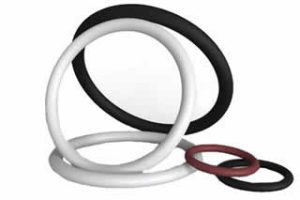
O-rings play an important role in sealing applications. Also known as toric joints, they consist of a circular, ring-shaped piece of elastomeric material. You can place an O-ring around a shaft or cylinder to create a seal. When compressed, the O-ring will create a tight seal between the shaft or cylinder and the mating surface.
While all O-rings have a similar shape, they are available in different styles. There are hollow core O-rings, for example. Hollow core O-rings protect against leaks, but they feature a unique design that distinguishes them from other O-rings.
Overview of Hollow Core O-Rings
Hollow core O-rings are mechanical seals that feature a hollow internal core or cross-section. They feature the same circular, ring-shaped design as most other O-rings. Rather than having a solid internal core, though, hollow core O-rings have a hollow internal core.
Hollow Core vs Solid Core O-Rings
Encapsulated O-rings can be classified as hollow core or solid core, depending on how their cross-section is constructed. Encapsulated O-rings are characterized by a two-part design: an outer jacket and an internal core. The jacket consists of a polytetrafluoroethylene (PTFE) material, such as FEP or PFA, whereas the internal core consists of silicone, fluoroelastomer, or a similar material.
Solid core O-rings are encapsulated O-rings with a solid internal core. Some of them have a silicone internal core. Other solid core O-rings have a fluoroelastomer. Regardless, they all have a solid internal core or cross-section. Hollow O-rings, on the other hand, have a hollow internal core. You can find them in the same outer jacket materials solid core O-rings, but hollow O-rings have a hollow center.
Benefits of Hollow Core O-Rings
Hollow core O-rings are commonly used in sealing applications with high compressive forces. All O-rings, of course, can handle compressive forces. As they compress, they will create a tight seal that keeps out liquids or gases. But hollow core O-rings offer exceptional sealing thanks to their hollow internal core.
With their hollow internal core, hollow core O-rings are very elastic. They will compress more than standard O-rings, which makes them highly effective at sealing when exposed to compressive forces.
Hollow core O-rings also have a lower hardness level than standard O-rings. They aren’t as hard as standard O-rings. Combined with their hollow internal core, this increases their elasticity so that hollow core O-rings can deform more under compressive forces.
